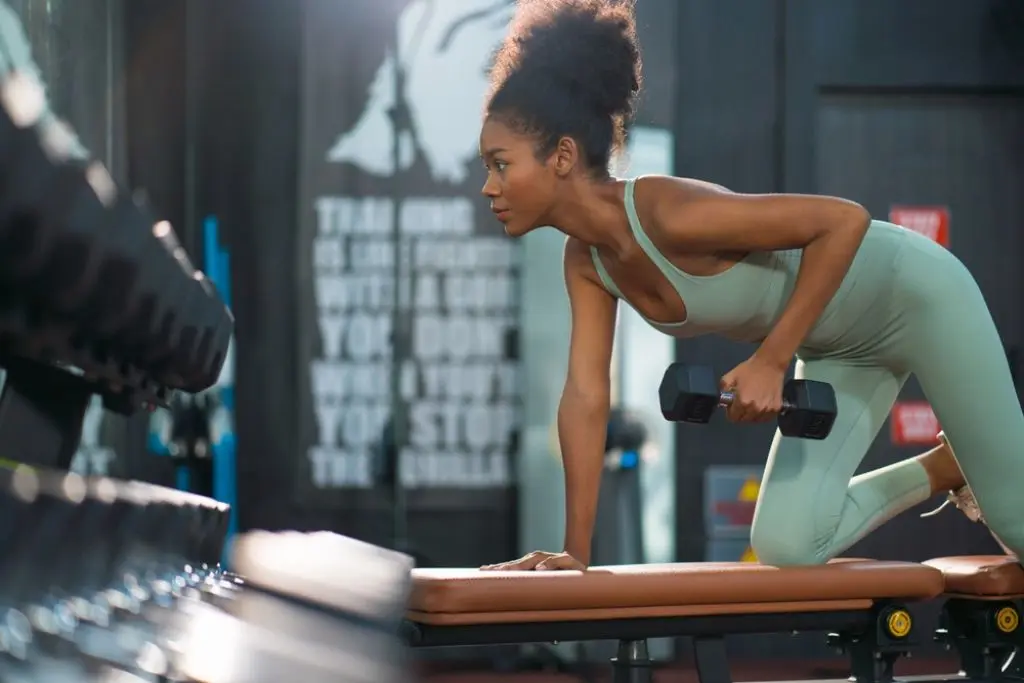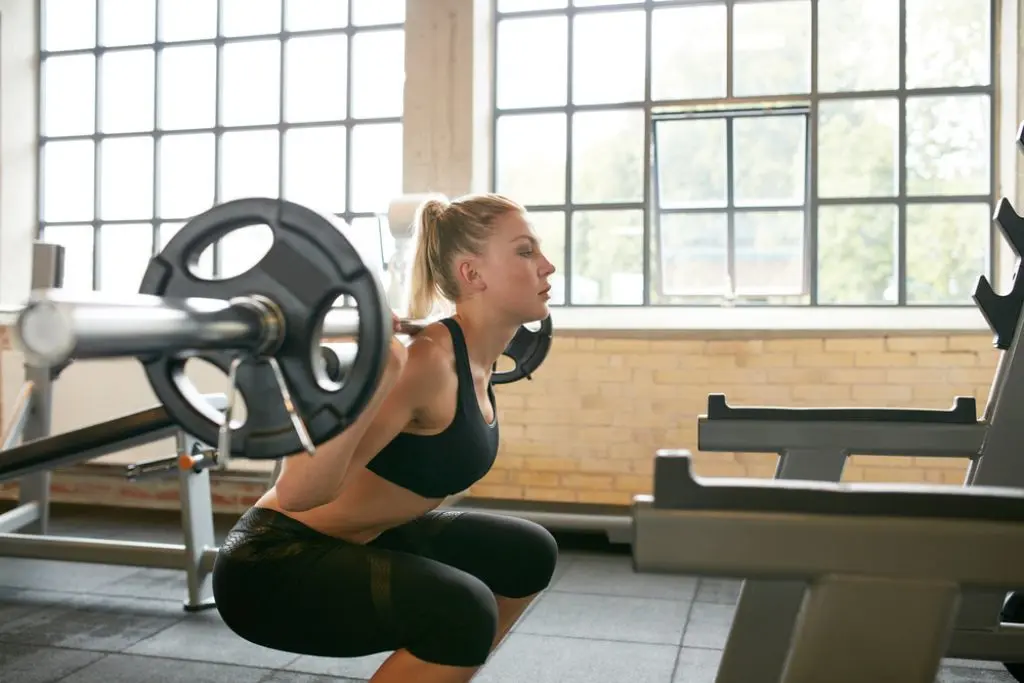Dumbbells Vs Barbells: Which Is Better?

April 18, 2023

So you’ve decided to start strength training? Amazing! Whether you’re researching the best home workout equipment or have walked into the gym for the first time and aren’t sure where to start, it’s common to wonder - which is better when it comes to dumbbells vs barbells?
Likewise, if you’ve been training for a while you might be eager to know which piece of equipment will help you get the most out of your workouts and achieve your fitness goals faster.
Dumbbells and barbells are both referred to as free weights, meaning that unlike gym machines, they are unattached and can be picked up and moved around. Both come in a few different shapes and styles and can be amazing tools to help increase muscle strength and mass, bone density, and improve your body composition and overall performance, but what are the differences? How do they stack up when compared to each other?
Unfortunately, the answer isn’t cut and dry as it depends on which component of fitness or training you’re talking about. Which is better for what? Working out in a small space? Heavy lifting? Correcting muscle imbalances? Mastering explosive movements?
To help you figure out what to buy for your home set-up or what to use next time you’re at the gym, we’ve put together this guide to dumbbells vs barbells and the pros and cons of each.

Dumbbells: The pros and cons
Good for beginners
If you’re at the beginning of your strength training journey, dumbbells are a great piece of equipment to have on hand. They’re easy to use, don’t require as much setting up as a gym machine or barbell, and you can opt for light weights as you build your strength and confidence.
Good for small spaces (or small budgets!)
If you’re working out at home and have limited space or a limited budget, dumbbell workouts are the way to go. You can buy a few different fixed-weight sets to give you options or an adjustable set where you can change the weight as you need to! Got a small space but a big budget? You could invest in a full vertical rack of dumbbells.
Increased range of motion
Because a pair of dumbbells aren’t connected by a bar, you have far more range of motion during your exercises. The bench press is a great example, but this applies to many exercises.
When using a barbell for bench press, the positioning of your wrists, elbows, arms and shoulders is restricted to a relatively fixed position because of the bar, and the depth of your bench press is limited to the point where the bar makes contact with your chest. When using dumbbells, you have more freedom of movement.
This can be a good thing in terms of achieving greater depth, improving your mobility or adjusting your position to suit any injuries or joint issues, but can be a bad thing if the added freedom means you start to perform exercises with incorrect form.
Great way to reduce muscle imbalances
Because each hand moves independently when using dumbbells, it’s much easier to tell if you have any muscle imbalances and work on these areas of muscle weakness or poor range of motion.
If you were performing bicep curls using a barbell and one side of your body was weaker, you could use the strong side to power most of the movement. With dumbbells, your weaker side would be clear immediately and you couldn’t use the strong side to compensate. This is ultimately a good thing as it allows you to correct the imbalance and in the long term it will help you to lift heavier weights with good form.
Requires extra stability
During dumbbell workouts, each hand moves independently rather than being fixed to one bar, making it more difficult to keep the weights stable and your body has to use its smaller stabiliser muscles. This one can be good or bad, depending on what you’re wanting to get out of your training.
Recruiting those smaller stabiliser muscles is great in terms of overall athletic conditioning, improving your balance, targeting weak spots and reducing your risk of injury, but because these muscles are smaller and weaker, lifting heavy weights is harder with dumbbells.
Your weight progression is more limited
As mentioned, dumbbells require more stability and the use of smaller muscles, therefore your progress in terms of lifting heavier weights may be limited or improve at a slower rate.
Let’s take the squat, for example. If you’ve become confident with performing a back squat using a 20 kilogram barbell on its own, your next step might be to add a five kilogram plate to each side of the bar to achieve a total weight of 30 kilograms. That weight progression is far more achievable and realistic using a barbell than if you were to progress from using a pair of five kilogram dumbbells to a pair of 10 kilogram dumbbells.
An experienced lifter might be able to comfortably perform a 60 kilogram back squat, but holding a pair of 30 kilogram dumbbells would be incredibly difficult, even though it’s the same total weight.
Better safety
If you’re new to strength training or don’t have someone to spot you, dumbbells can be a safer option for some exercises. Imagine this, you’re lying down on a bench holding a barbell ready to bench press or standing with a barbell on your back in preparation for a squat. At the end of a rep, you realise you don’t have the strength to lift the weight. Unless you have someone to spot you, this can be tricky to get out of and increase your risk of injury, but if you were using dumbbells, you could simply drop the weights to the floor.
Larger variety of exercises
There’s definitely a lot you can do with a barbell, but your options with dumbbells are much more extensive. Barbells and dumbbells can both be used for compound lifts that recruit several major muscle groups at once, but you can use dumbbells for accessory and isolation exercises too, such as tricep kickbacks, lateral raises, curl and presses and chest flys.
Looking for dumbbell workouts? Any of these Sweat programs are a great place to start:

Barbells: The pros and cons
Great if you have a big workout space
Trying to choose your equipment for an empty garage? A barbell, bench, rack and plates could be perfect for you! Likewise, if you’re working out in a spacious gym, learning how to use a barbell can be an amazing way to progress your strength training from smaller free weights like dumbbells, kettlebells and medicine balls. But remember, barbells and small spaces don’t go together too well!
Can be expensive
Even if you have a large workout area at home, not everyone has a large budget for equipment. Investing in a barbell, rack, weight plates, clips and a bench can be a costly exercise, especially if you’re lifting heavy and need a selection of plates.
Great for lifting heavy
If your training goals are based around progressive overload, getting stronger and lifting heavy, using a barbell is the way to go. Because the bar is in a fixed position, the load is more stable and easier to control, meaning you can add more weight and let those larger muscles do most of the work.
Someone who has been weightlifting for a while might be able to perform an 80 kilogram deadlift using a barbell and plates, but performing deadlifts with a pair of 40 kilogram dumbbells? The difficulty level is much higher.
Many people prefer to use a barbell for compound exercises such as squats, bench presses and deadlifts solely due to the fact you can lift heavier weights!
Great for explosiveness and compound exercises
Because stabilising the weight is less of a concern with a barbell compared to dumbbells, training with a barbell allows you to focus more on explosiveness and power. This is great if you’re performing compound exercises that engage multiple large muscle groups at once (such as squats and deadlifts) or if you’re following a training style like Cass Olholm's that involves exercises such as cleans and snatches.
Requires more time to set up
When you’re strength training with dumbbells, you do save yourself some time by simply being able to pick up your dumbbells and get started. With a barbell, extra time is required to set up the rack to the correct height, select and add plates to the bar, lock them in place with barbell collars, then get your body into position, unrack the bar and begin your reps.
If you then realise your weight selection isn’t right, changing the weights on your barbell is going to take more time than grabbing a different set of dumbbells.
Not sure how much weight you should be lifting? Check out this guide from trainer Katie Martin.
Equipment can be limited in the gym
Looking for a spare set of dumbbells and some free space in a gym generally isn’t too hard, but weight racks, benches and barbells can be more limited. For this reason, we recommend becoming comfortable and confident training with a mixture of equipment if you’re exercising in a gym so you’re not relying on one thing to complete your workout.
Can be uncomfortable
For some people, using a barbell just doesn’t feel good, whether it’s uncomfortable on your back during squats, or it doesn’t feel great for your wrists in exercises like front squats or bench press. This is something unique to your body and preferences.
Add barbell workouts to your routine with any of these Sweat programs:
We love to train with…
A mixture of both! Barbells and dumbbells are both fantastic pieces of equipment and neither is better than the other overall. Because they allow you to train in different ways, perform different movements and achieve different results, incorporating barbells and dumbbells into your workouts is a great way to improve your overall strength, fitness and mobility.
If you only have access to one or the other, that’s absolutely fine - there is still SO much you can do and achieve. But if you can make use of both in your workout routine, go for it. The more the merrier!

A more empowered you starts with Sweat, and our editorial team is here to bring you the latest fitness tips, trainer recommendations, wellbeing news, nutritional advice, nourishing recipes and free workouts.
* Disclaimer: This blog post is not intended to replace the advice of a medical professional. The above information should not be used to diagnose, treat, or prevent any disease or medical condition. Please consult your doctor before making any changes to your diet, sleep methods, daily activity, or fitness routine. Sweat assumes no responsibility for any personal injury or damage sustained by any recommendations, opinions, or advice given in this article.
Fitness